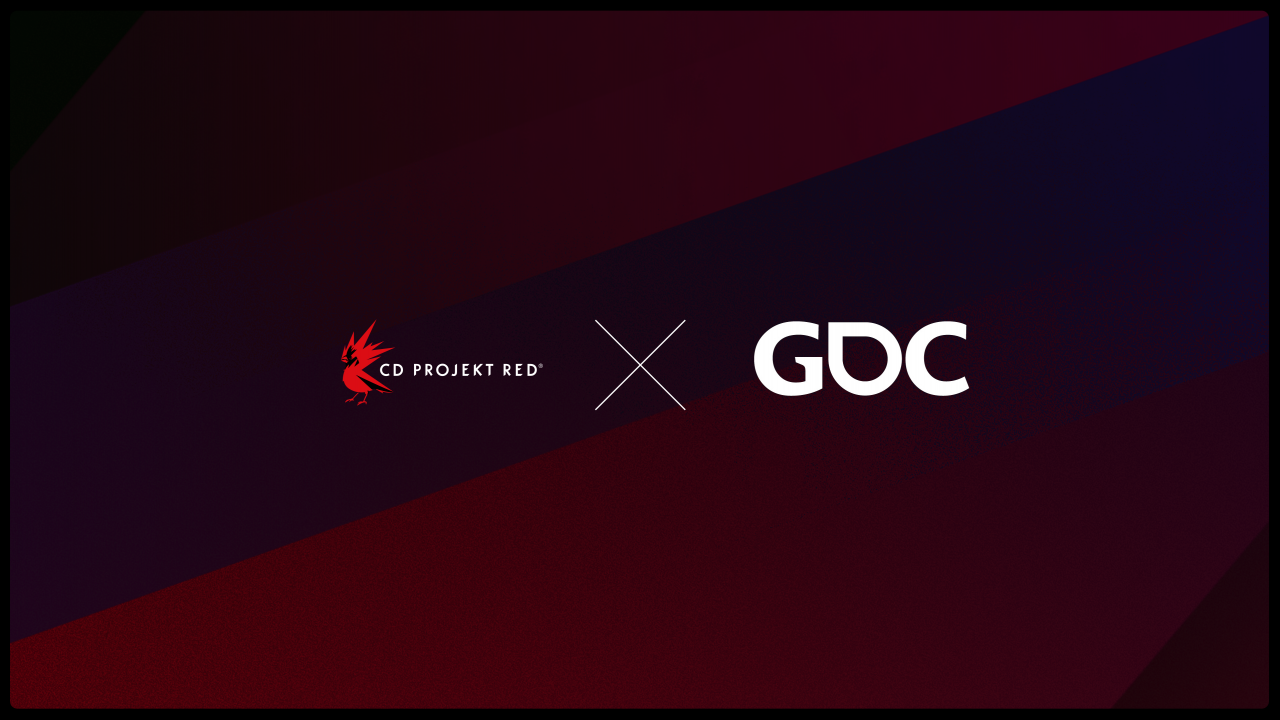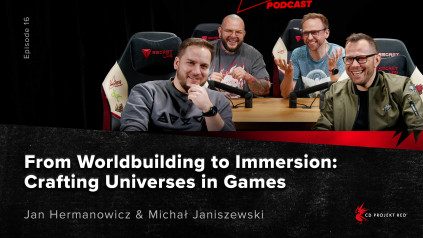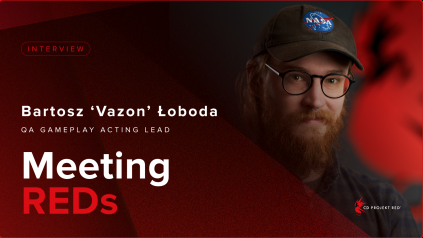Meeting REDs: Weronika Rajszys
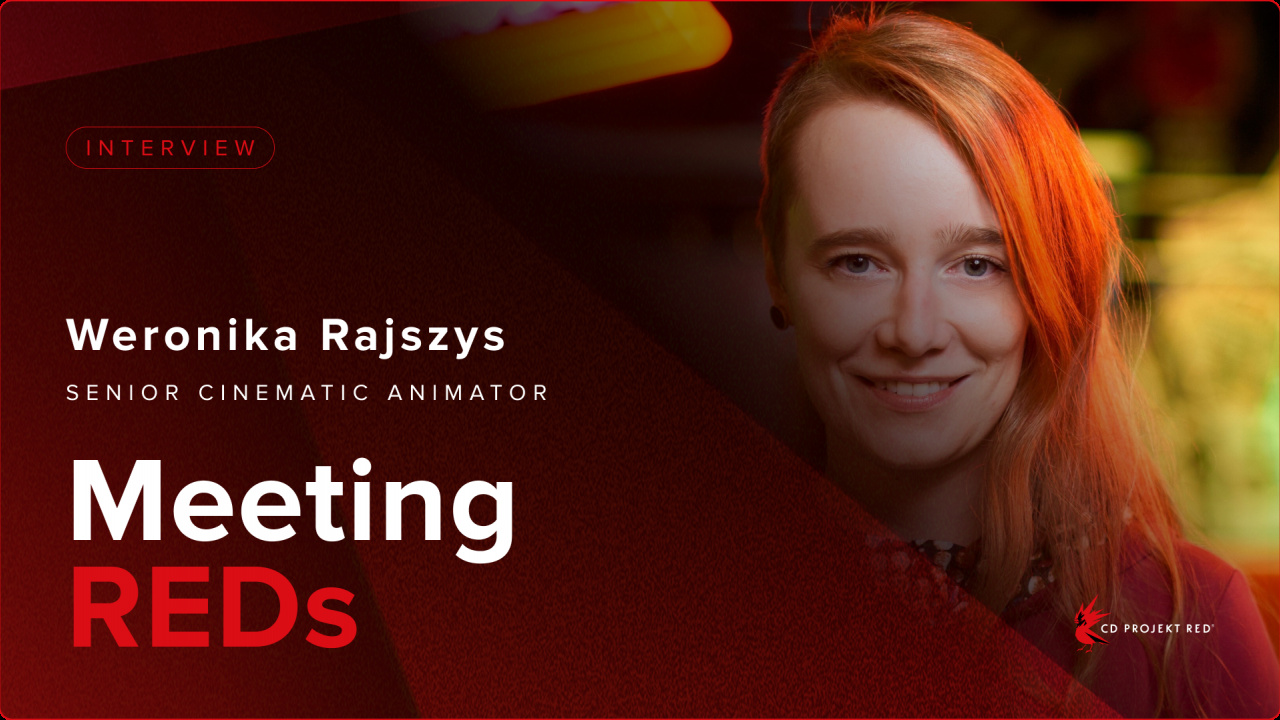
What were you doing six months before you began working here?
I had finished the Animation Mentor Character Animation Program — an online school with teachers who work in the animation industry at companies like Pixar and Disney — then made a demo reel and built my portfolio. I expected to become an animator for films at some point but also liked the idea of making trailers and cutscenes. As I had some friends working in game dev and my partner played CD PROJEKT RED’s games, I applied when I saw an opening!
How has your role evolved?
I started as an intern on the Gameplay Animation team, then moved into a Junior role before transitioning to the Cinematic Animation team. Toward the end of production, the Gameplay team often supported the Cinematic team to help wrap things up. I really enjoyed contributing during that time, and the Cinematic team appreciated my work and encouraged me to join them. I eventually became a full animator and was promoted to Senior around two years ago. After that, I went on maternity leave and was away for about a year.
What exactly does it mean to be a Senior Cinematic Animator?
It’s changing a little bit right now, but we think about cinematic animation as narrative animation. We handle all the cutscenes, but also regular dialogue scenes and things like that. In cinematic animation we also take care of open-world animations, which were previously done by the Gameplay Animation team. The open-world animations are, for example, characters in villages and cities doing their own stuff. We want them to tell stories too.
Is it important to understand subtle elements like how to convey emotion?
Not everything that we do is very emotional, but I think there is more subtle acting, facial animations, and emotion involved compared to other animation types. In the Gameplay Animation team you have to focus more on the timing of things and responsiveness. When you work on the player animations, for example, and you want the player to have a good feeling and not break their immersion, you often only have a very small response time and have to work very closely with gameplay designers. We are not so constrained by timing requirements, so some of our animations can be very long.
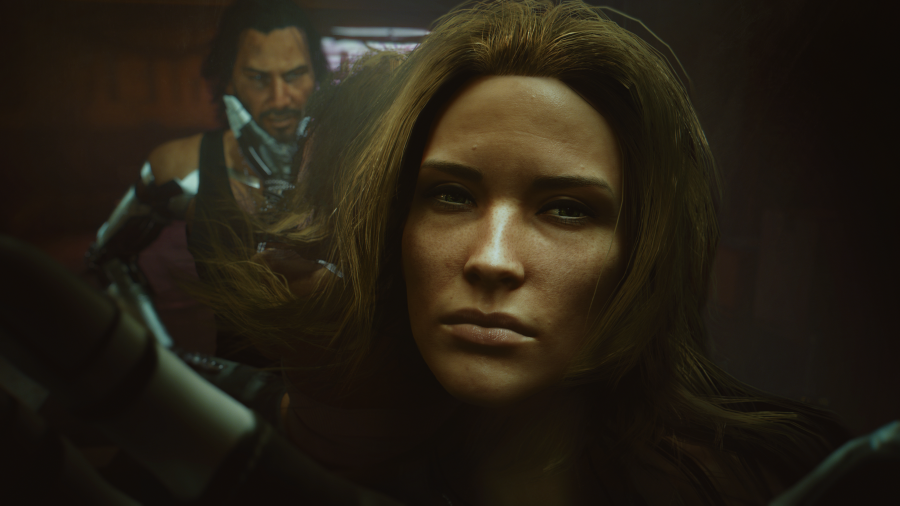
Is the process fairly simple or is it quite fluid?
It’s an iterative process. There are always changes, so some animations get rejected and some have to be recorded again. We do alpha as the first stage, which is selling the point of the animation, but it's not perfectly polished and some details are left for later. The idea is that, when we have 100% confidence that this animation will be used, we then go to beta and polish. But it doesn't always work like that!
Are you involved in the motion capture process?
For some scenes we have to record custom animations, and they are done specifically for each scenario. To record them we go to the motion capture stage as a pair: the cinematic animator and cinematic designer. The former focuses on ensuring all technical requirements are met, while the latter acts more as a director, guiding the creative vision. Nowadays we also record performance capture which, unlike motion capture, simultaneously captures facial expressions and voice acting alongside body movements. This is even more complicated; more people have to be involved to make sure everything is working smoothly.
How much of the job is working with other people?
It's a lot in our company. It's a very collaborative process. My team closely works with the cinematic designers but also the open world designers, tech programmers, motion capture team, character designers, and modellers. There's a lot of collaboration! Of course, not with everyone all the time, but there are always a lot of conversations happening.
What technical skills are necessary to keep up in this sort of environment?
Keeping in mind we were all working on a different engine not so long ago, I’d say that you don’t need to be an expert on things from the start. Like with the switch to Unreal Engine — it’s a tool you can learn as you go and build up that experience, but it’s definitely still useful to have some familiarity. For me though, the most important thing is to know animation principles.
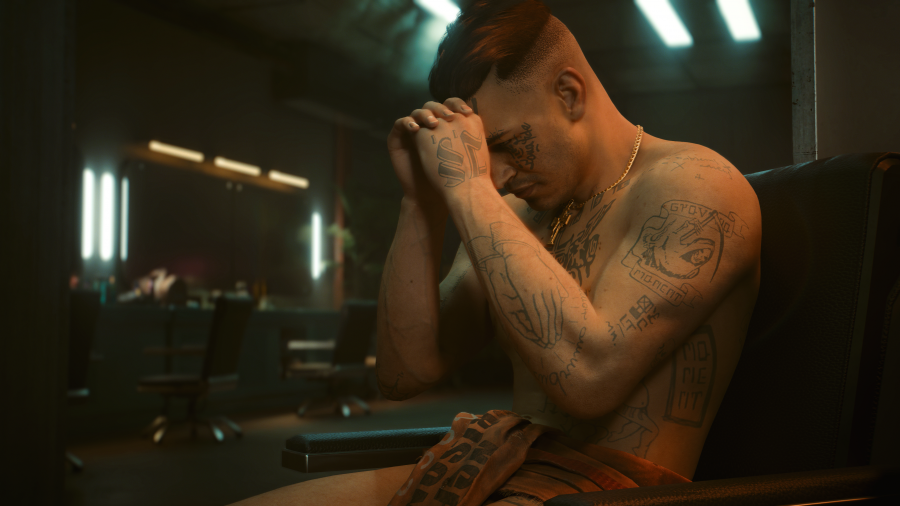
How can someone best show off their animation talents to CD PROJEKT RED?
I think your demo reel is your business card. That's what we look at. We have REDs who worked in the film or visual effects industries before coming here and REDs who went to work in these industries after. And ones who came back! It's not an easy switch; I would say that working in games is more technical, so we definitely look for experience here too, and it’s an advantage if you have a knack for problem solving. That's also why collaboration is important, because you’re not able to fix a lot of problems by yourself.
What has meant the most to you from your decade working here?
I think my colleagues. There are really amazing artists and very interesting and supportive people, so it’s a great environment. I've made some friendships that I think will be lifelong. I think this is what kept me going. Looking at people actually playing your quests and playing your scenes and feeling what you wanted them to feel — or sometimes having unexpected reactions — is also really great. Another favorite moment was when we released the first trailer for Cyberpunk 2077 with Keanu Reeves and he was there on stage. All the REDs were watching it together in the canteen so there was this great crowd atmosphere. And there was this iconic, unexpected moment when the guy in the audience shouted “You’re breathtaking”. It was amazing to experience this together with everyone.
Do you have a favorite piece of work from your time here so far?
I have two that I think are my favorites. They are both from Cyberpunk 2077. The first is from They Won't Go When I Go, the quest with the crucifixion. It was a very interesting experience to work on this, from the motion capture shoot to seeing it come to life with the effects and lighting, and then seeing people's comments and reactions. Another one is the quest where you play as Johnny Silverhand and there is a sex scene with Alt — I’m proud of it! It was also an interesting process.
Thank you Weronika! We already can’t wait to see what amazing work you produce on future CD PROJEKT RED projects! Congratulations on your 10 year anniversary and here’s to the next milestone!
AnsweRED PODCAST
Join hosts Paweł Burza and Sebastian Kalemba as they dive into various game development topics with the help of guests from CD PROJEKT RED, Promised Land Art Festival, and the wider industry. This podcast is the perfect listen for anyone interested in game dev; it offers a unique platform to gain valuable insight and knowledge directly from our experts. Tune in today!

 All posts
All posts
